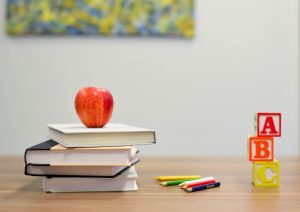Goals

Brief description of the issue
Changing educational practices can be difficult, especially if we are trying to do it on our own. To initiate the process with our work team can be easier and definitely more motivating. Here are a few activities you can do with your colleagues to make sure your work environment is free from gender stereotypes and contributes to gender equality.
Our own practices
Here are a few questions to discuss with your team:
- What are the endearing words you use with children? Are they different according to their gender? Do they seem connoted or neutral?
- During meals, how are children placed around the table? Who is served first? Who is helped? With who are you interacting?
- In your daily practices, do you tend to give more importance to girls’ appearance than to boys’?
- Do you feel that you are depriving boys from some caring activities you do with girls (for example, doing their hair, comforting them when they are crying, etc.)?
- Do you sometimes think that children’s clothes limit their possibilities in terms of games and movements?
- When children are arguing, is there normally an intervention from an adult? If not, how is the conflict resolved and in favour of whom? To whom do we ask to accommodate? How do children react in a conflict (surrender, accommodate, resist)?
- When a child hurts him or herself, who are we comforting the most? To whom are we telling not to cry? What are the words used to comfort the child?
Classify activities and toys
To assess the presence of gender stereotypes within the toys, activities proposed and other educational materials used in your early childhood center, we are inviting you to complete an inventory of the themes, games, toys and activities in place, identifying those that are stereotypical (for example, superhero-themed week, pink plates and pots) and those that are supportive of diversity and equality (for example, fall-themed week, water play area). You will then be able to make sure more easily that there is a variety of toys that are accessible and used by all children. Once it’s done, we are inviting you to answer, as a team, to the following questions:
- Among the themes and toys proposed to children in your early childhood learning center, which ones seem stereotypical? Which ones seem to support the most gender equality?
- When at your center, do children tend to gather with same gender kids? If so, what can be causing this situation?
- In which spaces of your center do you see boys and girls playing together the most? Does the arrangement of the place encourages interactions between boys and girls?
- What are the games or toys engaging boys and girls together the most? On the opposite, what are the ones creating unhealthy competitive interactions between boys and girls?
- Do you have recommendations to encourage diversity, collaboration and cooperation between children?
- How do you react when you see exclusionary practices between children (for example, a group of boys tells a girl she can’t play hockey with them because she is a girl)?
References
DUCRET, Véronique et NANJOUD, Bulle (2015). Guide d’observation des comportements des professionnel-le-s de la petite enfance envers les filles et les garçons, 2e édition, Le 2e Observatoire, accessible at: http://www.2e-observatoire.com/downloads/poupee_guide_interieur_simple_web.pdf
SECRÉTARIAT À LA CONDITION FÉMININE (2011). D’égal(e) à égaux: pour la promotion de rapports égalitaires entre filles et garçons dans les services de garde éducatifs. Québec: Ministère de la Culture, des Communications et de la Condition féminine.
